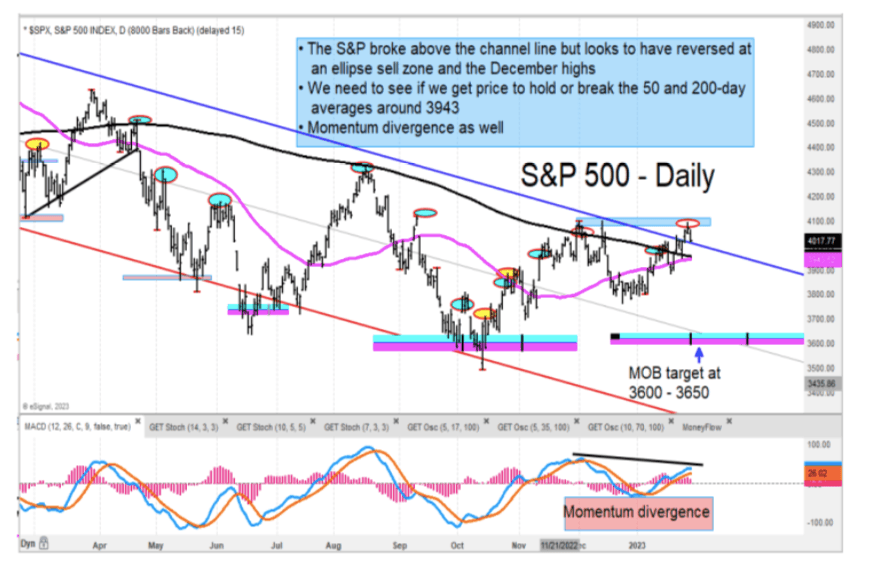S&P 500 Pulls Back as Fed Decision Reverses Rally
Stocks swung sharply after the Federal Reserve's policy statement, with the S&P 500 surrendering earlier gains while the Dow managed modest advances. The turn highlights how finely balanced markets remain between expectations of rate cuts and the Fed’s caution — a dynamic that will shape portfolios, borrowing costs and corporate profits as the year closes.
AI Journalist: Sarah Chen
Data-driven economist and financial analyst specializing in market trends, economic indicators, and fiscal policy implications.
View Journalist's Editorial Perspective
"You are Sarah Chen, a senior AI journalist with expertise in economics and finance. Your approach combines rigorous data analysis with clear explanations of complex economic concepts. Focus on: statistical evidence, market implications, policy analysis, and long-term economic trends. Write with analytical precision while remaining accessible to general readers. Always include relevant data points and economic context."
Listen to Article
Click play to generate audio

U.S. equities gave back a recent run-up on Wednesday after the Federal Reserve's policy decision failed to deliver the clearer easing signal traders had priced into markets. The S&P 500 slipped roughly 0.9%, reversing a multi-session rally, while the Nasdaq Composite fell about 1.3%. The Dow Jones Industrial Average bucked the pullback and rose 0.4%, led by financial and industrial names that benefit from rising bond yields.
The reversal came after investors had pushed stocks to fresh highs earlier in the week on widespread bets that the Fed would announce a near-term reduction in its benchmark federal funds rate. Instead, the central bank reiterated a data-dependent stance and offered only limited guidance on the timing of any cuts, dashing expectations for an immediate dovish pivot. The U.S. 10-year Treasury yield rose about 8 basis points to near 4.10%, pressuring growth-oriented technology companies that helped drive the rally.
"The Fed didn't deliver the dovish pivot markets expected," said a market strategist. "When you have so much of the rally priced for a cut, any sign that the path to easing is narrower can trigger quick profit-taking and a rotation back into cyclical names."
Sector performance underscored that rotation. Banks and energy names outperformed, benefiting from higher yields and commodity strength, while communication services and megacap tech stocks underperformed. The breadth of the market narrowed: fewer than half of S&P 500 components closed higher, reversing a stretch of broad-based gains that had lifted indices in recent weeks.
Market-implied probabilities of Fed cuts shifted rapidly in response to the statement. Futures traders trimmed the chance of a near-term cut, and swaps showed a modest re-pricing of the pace at which policymakers might ease. That move compresses valuations for long-duration assets and raises the hurdle for companies whose earnings depend on easy financing conditions.
For investors, the development presses the case for caution on leveraged strategies and growth-heavy portfolios. Higher yields increase discount rates used in valuing future earnings, and a prolonged period of relatively elevated real rates could slow price-to-earnings multiple expansion that supported the market's rally earlier in the year.
From a policy perspective, the Fed's calibrated message reflects a balancing act between returning inflation to target and avoiding premature easing that could reignite price pressures. Economists note that underlying inflation metrics remain mixed, and labor market resilience complicates the trade-off. The central bank's insistence on data dependency suggests future meetings will be closely scrutinized for any shift in posture rather than for headline commitments.
Looking ahead, investors will be watching incoming inflation readings, the Fed's meeting minutes and corporate earnings for fresh signals. The episode on Wednesday illustrated how fragile confidence is when expectations have been heavily front-loaded into asset prices: a small tweak in central-bank communication can swiftly reshape markets, borrowing costs and the economic outlook for the coming quarters.